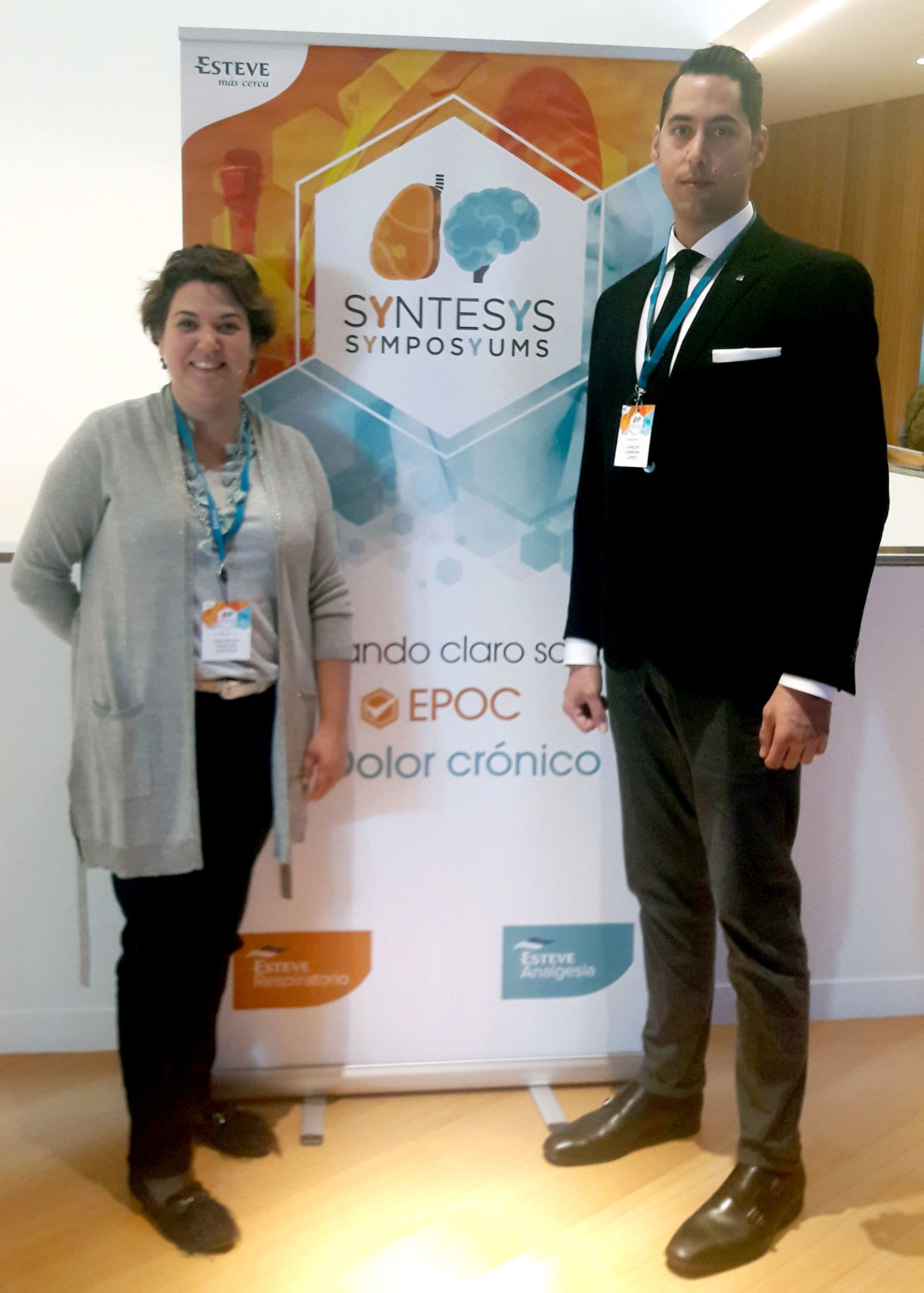06/03/2018
80% OF PATIENTS WITH COPD AND 50% OF PATIENTS WITH CHRONIC PAIN ARE POORLY TREATED
Primary care physicians are central to the approach of both conditions, which account for more than 60% of primary care consultations
The Syntesys symposium, organized by ESTEVE, helps primary care physicians improve the diagnosis and treatment of both diseases with a comprehensive and practical vision by means of clinical cases that reflect their daily reality of care
Syntesys includes 6 meetings attended by 600 primary care physicians

Chronic Obstructive Pulmonary Disease (COPD) and Chronic Non-Cancer Pain (CNCP) account for more than 60% of primary care (PC) consultations 1. Also, these conditions pose major challenges in their diagnosis and treatment. Almost 75% of patients with COPD go undiagnosed 2 and, in the remaining 25%, eight out of ten are not treated according to clinical practice guidelines. In CNCP, treatment is insufficient in half of affected patients 3. The purpose of the Syntesys symposium, organized by ESTEVE, is to improve this situation by offering a number of keys to the 600 PC physicians who will participate in the meetings held in Palma de Mallorca, Baiona, Cádiz, Alcalá de Henares, and Segovia.
PC physicians are the first point of contact for most patients with COPD and chronic pain, and therefore a crucial pillar in the approach to these diseases. This is why the purpose of the Syntesys workshops is to stand out for precision and interaction.
The idea is to reflect the family physicians daily reality of care by approaching the most frequent clinical cases they attend to at their office, and to offer a much simpler, more practical and more simplified vision away from other stricter, less didactic formats, Dr. Carlos Cabrera, a physician at the Service of Pulmonology of the Gran Canaria Dr. Negrín University Hospital and secretary of the COPD Area of the Spanish Society of Pulmonology and Thoracic Surgery (SEPAR), explains.
For her part, Dr. Ana Mencías, a Physical Medicine and Rehabilitation specialist at the Pain Unit of the Ntra. Sra. de Candelaria University Hospital (Tenerife), says that it is not about PC physicians having the complex knowledge of pain specialists, but rather about providing them with tools that prove really useful in their daily practice, and also about updating pharmacological management and delving into minimizing interactions and side effects to improve the patients quality of life and reduce the social, financial and occupational impact of pain.
Much simpler algorithms for diagnosis and treatment
COPD and CNCP have tremendous impact, not only financially sick leaves, disabilities, pharmaceutical expenses, etc. but also in terms of the patients health and quality of life. This is why experts emphasize that the sooner they are diagnosed, the less they become chronic and the less impact they have on the health system and the patient, according to Dr. Mencías. The Syntesys workshops have provided each disease with a new algorithm to facilitate its diagnosis.
COPD is a preventable, treatable, yet irreversible condition that obstructs the bronchi and reduces lung capacity. Caused by smoking in 90% of cases, it is the fourth cause of death in Spain 4, and more people die from COPD than from lung cancer. The complexity of treatment and the algorithmic classification of the reference clinical guidelines GOLD (Global Initiative for Chronic Obstructive Lung Disease) and GesEPOC in Spain result in 80% of patients failing to be treated according to the recommendations of these guidelines. In addition, treatment also differs between these two guidelines, Dr. Cabrera explains.
The Easy Project algorithm 5, created by a group of North American and Spanish pulmonologists at the universities of Harvard (Boston, USA), Pamplona, Tenerife, Las Palmas de Gran Canaria and Zaragoza, is easier and more useful and, from a clinical viewpoint, simplifies the questions for diagnosis and therapy. Scientifically proven, it is 90% compliant with the GOLD recommendations. Dr. Cabrera adds that these workshops also address stable-phase and exacerbation treatment, as well as practical applicability in day-to-day PC.
Regarding chronic pain, Dr. Mencías mentions that it is considered as a disease, not a symptom, by the World Health Organization. It is a transversal condition that involves different healthcare providers (PC physicians, specialists in various areas, nurses, social workers, etc.) and whose treatment requires a multidisciplinary approach.
The clinical and pharmacological decision algorithm presented at Syntesys to PC physicians includes a series of questions on five pain-related key words whose initials are easy to remember because they make the acronym Alicia: Onset (Aparición), Location, Irradiation, Characteristics, Intensity, and Relief (Alivio). Dr. Mencías also mentions that it is important that treatment be adapted to the type of pain diagnosed. Anti-inflammatory drugs are still being frequently used against chronic pain, which is not inflammatory. The same happens with neuropathic pain.
References
1. Gómez Sáenz J.T. Enfermedad pulmonar obstructiva crónica: morbimortalidad e impacto sanitario. SEMERGEN 2014; 40: 198-204. Y SEMERGEN
2. Soriano J.B., Miravitlles M. Datos epidemiológicos de EPOC en España. Arch Bronconeumol, 43 (2007), pp. 2-9 / Ministerio de Sanidad y Política Social. Estrategia en EPOC del Sistema Nacional de Salud. Centro de Publicaciones del Ministerio de Sanidad y Consumo, (2009)
3. Sociedad Española de Médicos Generales y de Familia (SEMG)
4. Soriano J. et al. Global, regional, and national deaths, prevalence, disability-adjusted life years, and years lived with disability for chronic obstructive pulmonary disease and asthma, 19902015: a systematic analysis for the Global Burden of Disease Study 2015. The Lancet Respiratory Medicine. Volume 5, nº9, p691706, September 2017
5. Cabrera C. et al. Validation of a new inhaled therapeutic algorithm for the stable COPD easy treatment project. European Respiratory Journal 2015 46: PA3856; DOI: 10.1183/13993003. Congress-2015.PA3856



